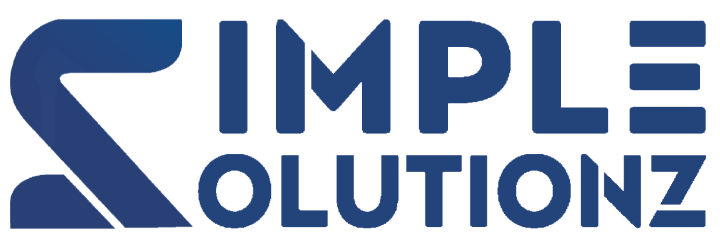Have you ever found that your search is going nowhere, even though a search engine gives you enough options to search? However, when you find the search term “people also ask,” it refines your search, and you get an answer quickly. This Google feature helps people to find what they want. Moreover, it becomes beneficial for your business, too. But how?
If you are not familiar with this. Don’t worry! We provide information about this search feature that can enhance your business strategy.
Contents
- What are People Also Ask (PAA) and People Also Search For (PASF)?
- How does it Appear?
- People Also Search For (PASF)
- How Does it Work?
- The Role of PASF in SEO
- How PASF Can Benefit a Business? Explain with an Example
- How Can You Use PASF to Improve Your Search Result Rankings?
- What do you have to do?
- Leverage PASF and PAA for SEO Success
- How can you do it?
- Are You Ready to Explore?
What are People Also Ask (PAA) and People Also Search For (PASF)?
People Also Ask (PAA) is a dynamic feature in Google’s search results that appears as a series of questions related to your original query. Each question can expand to reveal a brief answer. However, it is usually sourced from a webpage that Google deems relevant. This feature lets users quickly find answers to questions without clicking multiple links.
How does it Appear?
The PAA box appears in over 50% of Google search results and is a valuable resource for users and content creators. It offers a glimpse into the questions and topics people are interested in, providing opportunities for businesses to create content that answers these queries.
People Also Search For (PASF)
When you click on a search result and then return to the results page, it presents users with a related search list and guides them toward more refined queries. This feature helps users explore related topics and better understand the subject.
PASF is particularly useful for users still in the exploratory phase of their search. It provides them with alternative search paths, allowing them to refine their search and find more relevant information.
How Does it Work?
The algorithms behind PAA and PASF improve user experience by providing relevant information based on search intent. Here’s how they work:
- Google analyzes vast search data to understand user behavior and the relationships between different queries. By identifying patterns, Google predicts what additional questions or topics might interest users based on their initial search.
- For People Also Ask, Google generates frequently searched questions related to the original query. These questions have been selected to cover a range of related subtopics.
- Google scans its indexed web pages to find content that best answers these questions. The chosen snippets are displayed in the PAA box, giving users quick access to information.
- PAA and PASF features are constantly updated as Google learns more about user behavior and search trends.
The Role of PASF in SEO
PASF is crucial in search engine optimization (SEO) by offering insights into user behavior and search intent. Here’s how it impacts SEO:
Keyword Expansion: PASF provides valuable suggestions for keywords and phrases you might not have considered. Incorporating these terms into your content will widen your keyword strategy and attract a broader audience.
Content Inspiration: The related searches in PASF can inspire new content ideas, allowing you to create more targeted and relevant articles. This can help you address a wider range of user queries and establish your website as a comprehensive resource.
Understanding User Intent: PASF helps you understand what users seek beyond their initial query. By analyzing these related searches, you can gain insights into your target audience’s specific needs and interests.
How PASF Can Benefit a Business? Explain with an Example
Suppose you run a blog about fitness and wellness. By analyzing the PASF suggestions for a query like “benefits of yoga,” you might discover related searches such as “yoga for beginners,” “yoga for weight loss,” or “best yoga poses for stress relief.”
With this information, you can build targeted content that addresses these specific queries, attracting more visitors to your site. By offering information on these topics, you can make your blog a reliable source for all related yoga-related things.
How Can You Use PASF to Improve Your Search Result Rankings?
Leveraging PASF can enhance your search rankings and drive more traffic to your site.
What do you have to do?
- Incorporate the keywords and phrases suggested by PASF into your content. Ensure that they are used naturally and contextually to enhance your chances of ranking for these terms.
- Develop content that thoroughly covers the topics suggested by PASF. Aim to provide detailed answers and insights, positioning your website as a go-to resource for users seeking information on these topics.
- Check PASF suggestions regularly to stay informed about the latest search trends and user interests. This will help you adjust your content tactics to align with current demand.
- Use PASF insights to improve your website’s navigation and content structure. Ensure that users can easily find related information and explore various topics seamlessly.
- Use tools like Google Analytics and Search Console to monitor the performance of your content. Analyze which PASF queries drive the most traffic to your site and optimize your content.
Leverage PASF and PAA for SEO Success
To maximize the benefits of PASF and PAA, integrate them into your SEO strategy.
How can you do it?
- Analyze PAA questions related to your industry and create content that directly addresses these queries.
- With the voice-activated devices, optimizing for PAA can help you capture voice search queries.
- Use PASF and PAA insights to create content that keeps users engaged.
- As search trends evolve, regularly update your content to reflect new PAA questions and PASF suggestions.
Are You Ready to Explore?
“People Also Search For” and “People Also Ask” are powerful tools to enhance your SEO strategy. By exploring how these features work and incorporating them into your content marketing, you can gain valuable insights into user behavior, discover new content opportunities, and improve your search visibility.
Embrace these features to create content that aligns with your audience and positions your brand as a trusted source of information.

